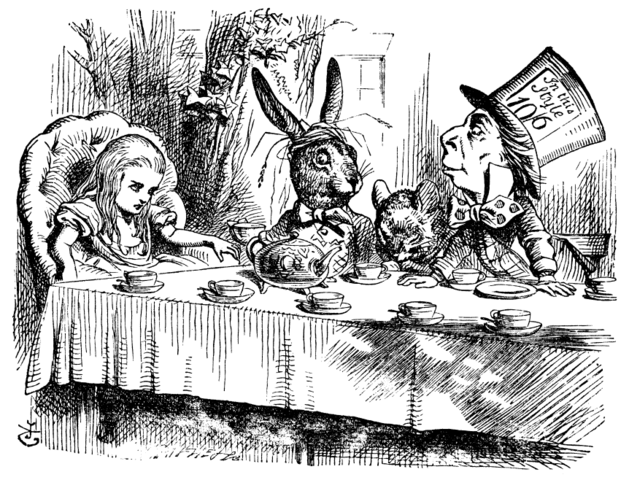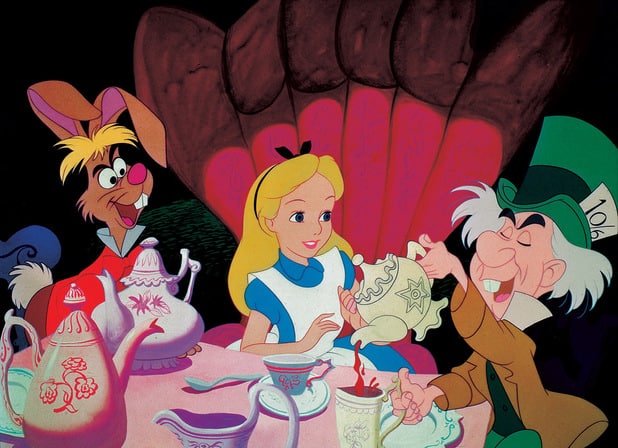
When it was first published in 1865, Alice's Adventures in Wonderland didn't require much technology other than the printing press. It was a book created through writing by Carroll and hand-drawn illustrating by Tenniel, nothing more. Over the years it has inspired numerous artists to create adaptations and unofficial sequels, which have increasingly used technology to bring the artists' visions to life.

Perhaps the most famous adaptation is Disney's film Alice in Wonderland (1951). Although still hand-crafted, now Alice was brought to the theaters, with animation and sound.

American McGee had decidedly more macabre ideas in mind when creating the 2000 computer game American McGee's Alice. After Alice's family perishes in a fire, she goes mad, and has to regain her sanity during the course of the game. Computers were essential to creating, distributing, and playing the game. Technology is inseparable from this work.
Binding art and technology this way bridges the gap between the two, and helps to create the "third culture" that Vesna talks about. At the individual level you have people who must be skilled in both; for example, the animator must understand the aesthetics of what they are creating, as well as how to create it with the software they are using. As games have entered the mainstream, people are advancing not only the technological capabilities, but also the artistic capabilities of them.
Sources
Carroll, Lewis. Alice's Adventures in Wonderland. New York: MacMillan. 1865. Print.
Disney, Walt. Alice in Wonderland. Walt Disney Productions, 1951. Film.
McGee, American. American McGee's Alice. Electronic Arts and Rogue Entertainment. 2000. Video game.
Snow, C.P. "Two Cultures and the Scientific Revolution. Reading. 1959. New York: Cambridge UP, 1961. Print.
Vesna, Victoria. "Toward a Third Culture: Being In Between." Leonardo 34.2 (2001): 121-125. Web.
No comments:
Post a Comment